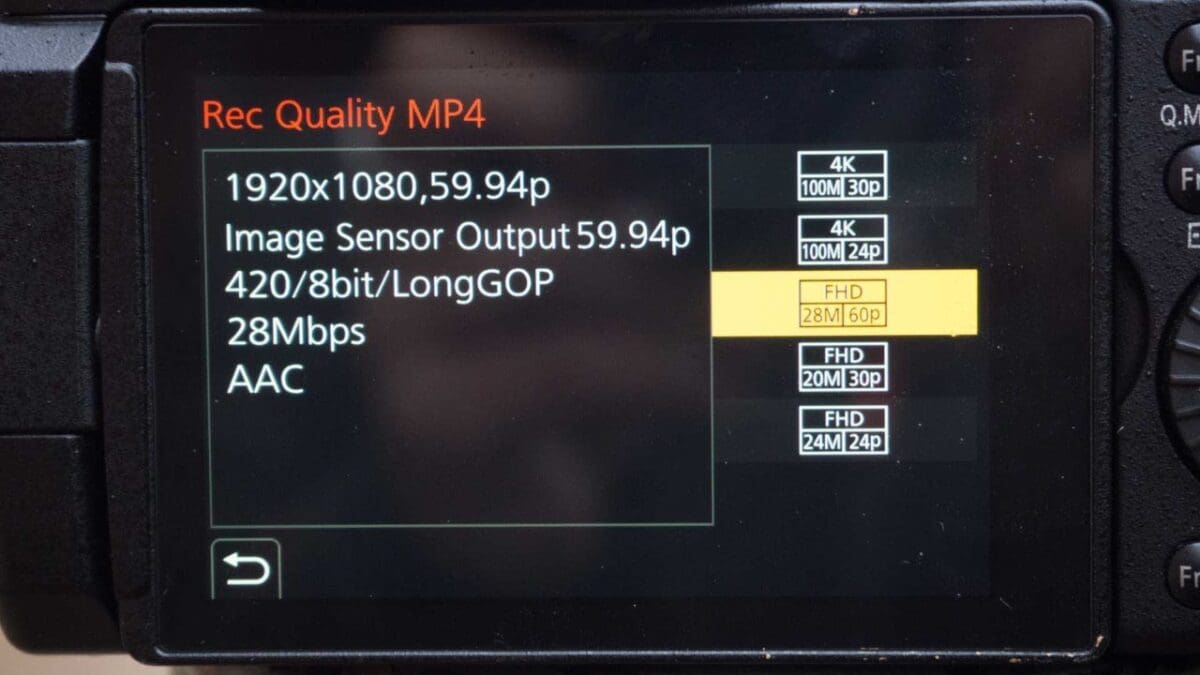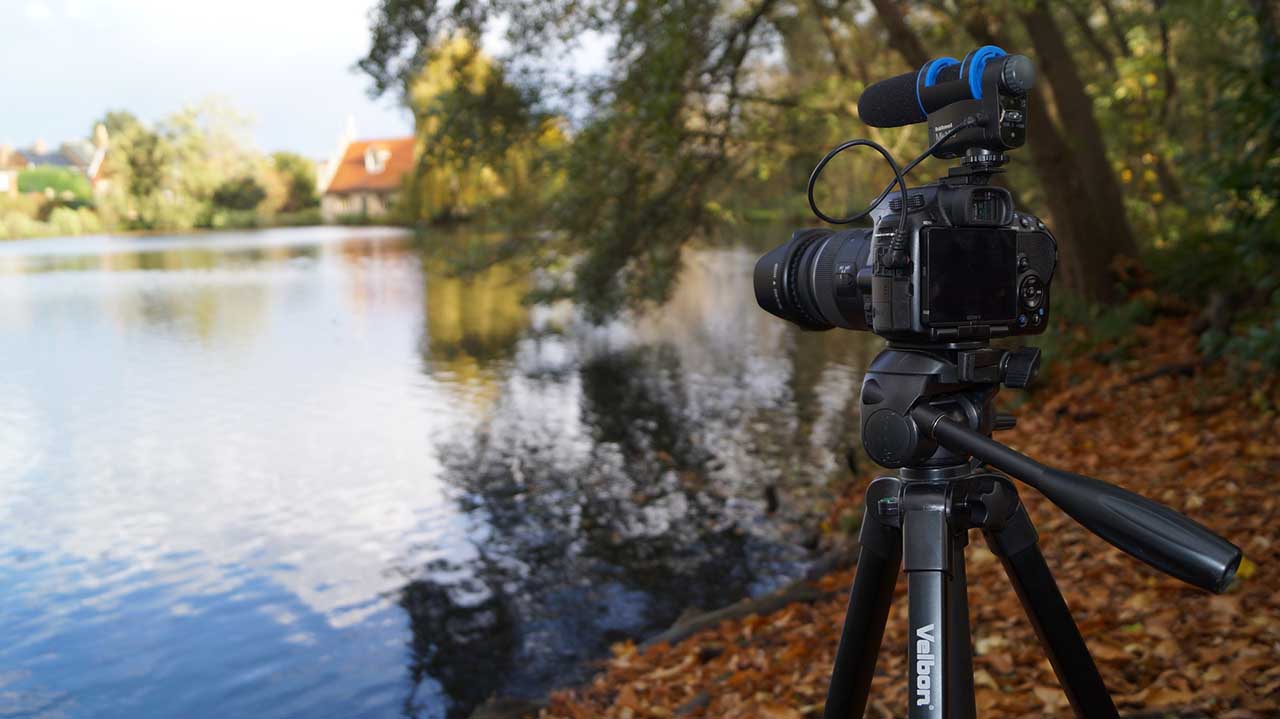As video technology develops at a rapid pace and becomes an increasingly important tool in our cameras it can leave a steep learning curve for many photographers. There is so much technical jargon to memorise, it can be daunting for some. One of the terms you’ll hear about often is VFR, or variable frame rate. So what is a variable frame rate, you may be wondering?
Variable frame rates came to the fore recently with the launch of the Panasonic GH5, which offers videographers a variety of frame rates. You can read it about in our Panasonic GH5 vs GH4 comparison or in our hands-on Panasonic GH5 review.
Why more frames per second enable slower motion videos
Panasonic’s use of Variable Frame Rate (VFR) might confuse someone who is just getting started using video. Despite Panasonic highlighting that the variable frame rate feature is there to enable you to capture slow motion video, you might wonder why you need more frames per second to shoot a slow motion video.
Basically video is really just a series of stills. They move in succession at speed so we only see one moving image – this is called ‘persistence of vision’ and is the key to all video / film.
The speed at which the deception from us seeing a bunch of still images flickering past to smooth motion varies dependent upon the scale but is roughly 15 frames per second (fps) for normal motion.
Your average TV from your youth is set to 25fps as this ensures things don’t look jerky if there’s a car chase. Push the resolution from PAL or NTSC of old to HD and it raises to 30fps (29.7fps to be accurate).
Today’s resolution of 4K raises it again, and although you can watch it at 30fps it can look a bit poor quality – so really 60fps is better. However, a few consumer-level cameras can cope with that framerate and produce a decent image.
But back to slow-motion videos: when you record footage at 120fps like the Panasonic GH5 can, it means you can slow down that recording and the extra frames will ensure the footage is smooth, not stilted and flickering like old film footage from the 20th Century.

So what is a frame rate in video?
Originally, the term ‘variable frame rate’ was used in association with compressing video. In compression terms, a variable frame rate is useful because it enables your software to adjust the frame rate – and therefore the file size – of a movie based on the content.
Fewer frames means a smaller file size. But with the GH5, Panasonic is introducing another definition of what variable frame rate means.
In Panasonic’s terms, the variable frame rate on the GH5 simply means that you can adjust the camera’s frame rate, which gives you some flexibility over the visual style of your footage.
It enables you to switch between the different frames-per-second options in 4K so as to give your video different visual motion styles. Slower fps for blurry effects and faster fps for speedy fight sequences.
The word ’variable’ makes it sound like the camera automatically sets the frame rate dependent on whats going on in the scene. But that’s not what it does at all; it just enables you to set the frame rate manually.
This is where filmmaking can become quite complicated!
Frame rates and shutter speed are closely linked. The frame rate is the number of frames that pass the shutter every second, and shutter speed is the speed at which the shutter opens within a second.
For video, the rule that ties the two together is known as the ‘180 degree shutter rule’. This equates to 2x shutter speed = 1x frame rate. So, for instance, a 1/120sec shutter speed requires a 60fps framerate.
Breaking the 180 degree shutter rule enables you to stylise your videos. Slow shutter speeds can be used to create romantic soft motion, and faster shutter speeds will create a jittery high impact motion style, perfect for car chases fight scenes.
Setting your camera’s variable frame rate options
To make things easy, most cameras have set options so when you delve into the video quality settings it will offer settings for 1080p @ 50fps or 1080p at 25fps.
On the Panasonic GH5 if you go to the quality settings, this is exactly what you will see, but alongside these options will be variable frame rates.
You’ll usually see your variable frame rates next to the higher mbps (Megabits Per Second) options, such as 100mbps. Mbps just denotes the data size that is being captured, the bigger the number the more data is being captured.
Once you select one of the variable-frame-rate-enabled quality settings you can then exit the quality options, select variable frame rate and click Set. Now you’ll be able to set the frame rate you desire.
As stated before there is the 180 rule to consider if you want to shoot standard smooth video, and Panasonic (and other manufacturers have their own versions) offers a handy feature that makes sure you stick to the rules.
In the menu settings options on the sixth page look for the ‘SS Gain Operation’, click and select ‘Angle/ISO’, and now when you go back to the main info display screen you’ll see that in place of shutter speed you’ll have a new number.
To complete the setup make sure you adjust the value to 180.
Now, if you’ve selected 4K resolution with the variable frame rate setting and then increased the frame rate to 60fps you can shoot slow motion. This means that when the footage is played back at 30fps, which is pretty standard, 1 second of footage will play back over 2 seconds.
What is frequency in video recording?
Before we finish there is another value that floats around with video and causes some confusion: Hz.
You’ll see it as 59.94Hz, 50Hz and 25Hz. These are really left over from broadcast where the world and formats were – and actually still are – split into frequency regions.
If you are going to broadcast your footage make sure you select the correct one for your territory. Here’s a brief guide…
59.94Hz – NTSC
50Hz – PAL
25Hz – Cinema
When it comes to video and formats, if you want to take a look at what’s possible then the GoPro Hero5 Black enables easy adjustment of all of the settings and is a great camera for getting to learn the basics.




